Articles of 2006
Photographing Ali’s Spirit
“I once thought I actually saw Muhammad Ali’s aura when we were in Zaire,” photographer Sonia Katchian told me over a cup of coffee in Morrisville, North Carolina. “It was huge!” she continued, extending her arms away from her body. “I reached for my camera, but then it was gone.”
To the typical sports journalist, such comments might raise an eyebrow. But when an athlete transcends his sport, he does much more than excels or dominates. He touches millions of people from all walks of life who could have cared less about the sport before his arrival and after his departure. No one exemplified this more than Muhammad Ali.
“He (Ali) is truly one of the amazing people of all time,” said Sonia. “He has a stronger charisma and a bigger aura than anyone I have ever met.”
For Sonia, that includes Princess Di and Jacqueline Kennedy Onassis, two people who she thinks come closest to matching Ali’s magnetism. “Of course, I never did meet Mother Theresa….” her voice trails away.
Sonia was the first female photographer credentialed to shoot ringside at a heavyweight boxing titlematch and the first female photographer hired by The New York Post. A photojournalist whose career took her all over the world, Sonia’s work has appeared in LIFE, TIME, Newsweek, Forbes, Vogue, Sports Illustrated, The New York Times, New York Daily News, etc. Yet nothing touched her more than her many experiences covering Ali.
The nomadic Sonia was born in Beirut, and grew up in the coal mill town of Martin’s Ferry, Ohio, before attending Barnard College, Columbia University’s Liberal Arts College for women in New York. She was part of the now infamous Class of 1968, responsible forthe student uprisings at Columbia over the military draft and the Vietnam War. Unfortunately, she had not taken up photography at this point in her life.
“I was an art history major at the time—but photography was not a subject offered by Columbia or Barnard back then,” she noted.
After graduating she went to Wyoming, where she worked as a cook on a ranch and painted in her free time. Sonia was unsure of the direction she wanted her life to take until a friend loaned her his Nikon camera. From the moment she looked at her first set of contact sheets,she knew that this was the medium for her.
“The immediacy of the medium is what snared me,” said Sonia, “and, it is a very forgiving medium. And now with digital, even more so!”
She returned to New York where she was a founding member of the original Soho Photo Gallery on Prince Street. She mentored with the legendary W. Eugene Smith in 1971 and her first published photo ran a full color page in LIFE.
The photo was of Alabama Governor George C. Wallace shot by a man in the crowd at a political rally in Laurel, Maryland, on May 15, 1972. Oddly enough,a Wallace staffer had taken away her credentials just moments before, forcing Sonia to step back away from the crowd. Minutes later, Arthur Bremer shot Wallace, paralyzing him below the waist.
“As much as I loathed his campaign, and that he stood for segregation, I was deeply saddened bythis experience,” said Sonia.
While being forced out of the crowd was frustrating at the time, it was one of the best things that happened to her career. Because of her position, she was able to thoroughly photograph the event and LIFEmagazine paid her a whopping $5,000 for the full-page photo. Sonia was the only accredited photographer covering the Wallace campaign – neither the Associated Press nor United Press International had photographers at the rally and were caught without pictures to run. As a result, the wire services established a policy that all presidential candidates were to be covered at all scheduled public events.
That instance led to many more opportunities for Sonia. She received the opportunity to coverthe “Rumble in the Jungle” when a staff photographer for Sports Illustrated saw pictures she had just made at Ali’s training camp in Deer Lake, Pennsylvania. The photographer, Tony Triolo, advised her to go straight to the picture editor at SI.
Her assignment in Zaire extended to two months after George Foreman suffered a cut eye in a sparring session. Much of the world press boarded planes and returned home. Sonia, a freelancer, chose to stay. Many of her photos were featured in SI’s coverage of the fight and in the weeks preceding it.
One of the photos that received full-page attention was of George Foreman with a butterfly band-aid over his eyes. Sonia was at the session where a sparring partner’s elbow cut Foreman’s eye, postponing the fight for six weeks. Sonia, whodid not spend a great deal of time covering Foreman, just happened to stop by that day. Once again, her timing was impeccable.
“I didn’t understand what was going on,” she said. “I just knew that he had been injured and that we would have a picture session with him the next day, and they just hustled him out of there.”
Shortly thereafter, Sonia ran into Ali on the lawn outside the gym. He stood there staring at her waiting for an answer.
“We looked at each other, like ‘Now what.’”
He wanted information on what happened to Foreman, but Sonia did not feel she could give an accurate account.
“I didn’t consider myself a reliable source so I just kept my mouth shut. I didn’t want to give bad information. We just stared at each other.”
For sports journalists, assessing and reporting the mechanics of boxing can be second nature. Sonia was at a loss when it came to the mechanics of boxing (according to her, she still is), nor which subjects of the sport were considered taboo.
“I didn’t know the questions I could ask,” she said. “It was all new for me. You have to understand: I came into the boxing world straight out of feminism bootcamp.”
She had dug some of the trenches herself as author of the controversial “Women See Woman,” an anthology of contemporary women photographers, and as a teacher at the Women’s Interart Center in NY. The world of boxing was about as sharp a contrast as you could imagine to that life.
“Not only was it an all-male environment,” she said, “it was also mostly a Black culture.”
However, she did have an advantage over her counterparts. Sonia speaks French, and was able to speak with many of the local Zairians. It was something that was rare among most of the country's visitors, including the African-Americans. Those in the fight game were thrilled to be there but were frustrated with the lack of communication.
Sonia’s perception of the two fighters is no different than most other retellings. Foreman, at the time, was brooding and sulky. Ali was more accessible and much more beloved by the locals. The postponement allowed Sonia to take what she considers to be some of her best photographs of Ali.
“One time I decided to cover him on one of his morning runs in Zaire,” said Sonia. “And there we are at 4:30 or 5:00 in the morning. The sun hasn’t come up. He’s like a frisky colt out there running around. So we get into the station wagon that drives us out to the country road, and then the car drops him and all of us off. I was in the back of the station wagon and fell out. He looks at me and goes, ‘That was dumb.’ Right then I took one of my best pictures.”
After covering Ali’s 8th round knockout of Foreman, Sonia was soon off to Beirut to cover Lebanon’s civil war for the Associated Press. Having been born there, it was a heartbreaking experience for her.
“I wanted to photograph Beirut before it was ruined,” she said, “and I got there just in time. It was destroyed right before my very own eyes.”
Sonia was the first foreign journalist to be kidnapped along Beirut’s Green Line. However, her time in captivity was thankfully short and she was released within 24 hours. Later that year, she went to Manila, Philippines, in September of 1975, assigned to cover the third match between Ali and Joe Frazier for SPORT magazine along with writer Dick Schaap.
In the area of ringside recap, Sonia will admit that she does not have a lot of information to offer. However, she, like the other journalists who covered the bout, can attest that the fight was an exercise of brutality. She remembers noticing the sweat that flew in her direction while she had her elbows on the apron shooting.
“Actually, at the time, I thought there was a fix because I couldn’t believe it went on so long,” she said. “There was the possibility that one of them could have died. You just didn’t know which one.”
As we all know, the fight went on for fourteen rounds, before Frazier’s trainer, Eddie Futch, stopped it. The “Thrilla in Manila” is one of the greatest bouts of all time.
Sonia went on to cover Ali’s fights with Ernie Shavers, Leon Spinks, Larry Holmes, and Trevor Berbick. She also traveled with Ali on many other occasions and visited his various homes. It was sad for her to watch the gradual decline. By the time Ali fought Berbick in the Bahamas in 1981, Soniasaid the seats were not even half-filled.
“He (Ali) couldn’t say no when the people around him begged for another payday,” said Sonia. “He swore up and down that he would never end up punch-drunk. But in the end, it was not that he couldn’t resist the money, he couldn’t resist his aides. They got paid really well.”
Sonia said she had no interest in covering fighters other than Ali. She never covered another boxing match after Ali’s final retirement in 1981. She moved to Tokyo in the 1980s and served as photo editor for Business Tokyo magazine and was Tokyo correspondent for Photo District News, a trade publication for professional photographers.Sonia now resides on a farm in North Carolina.
Her documentation of Ali in Zaire and throughout the 1970s is a valued treasure. So much so that film director Michael Mann hired Sonia as a consultant and used thousands of her photos, to capture Ali’s aura during the making of the Sony Pictures2001 biopic starring Will Smith.
Sonia is finally releasing some of her most prized Ali photographs to the public in a boxed set of large, limited-edition prints on watercolor paper. The Ali Folio™ consists of fourteen 24”x30” prints mostly from Zaire with others from the later 1970’s.
“There were many photographers who covered Ali, but only one who focused on capturing his spirit, instead of the muscle or the gag aspect. I let them focus on the gags, and I focused on the spirit. Black-and-white film allows you to do that. I never released these pictures to books. When they would ask for pictures, I would send them some others, but I would save the best for a day when they would be appreciated. And I think now is the time.”
And when will she publish her own book of Ali pictures?
“When the right publisher and I find each other,” she answers.
Meanwhile, The Ali Folio™ is available at AliFolio.com.
-
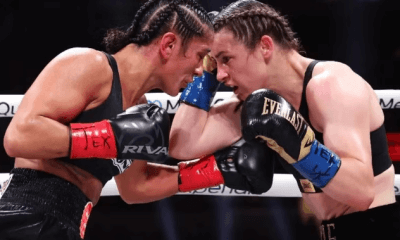
 Featured Articles3 weeks ago
Featured Articles3 weeks agoResults and Recaps from New York Where Taylor Edged Serrano Once Again
-
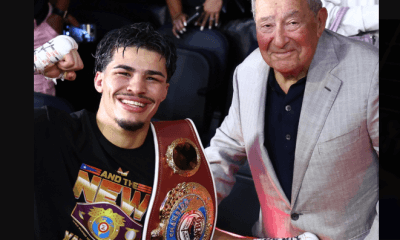
 Featured Articles6 days ago
Featured Articles6 days agoThe Hauser Report: Zayas-Garcia, Pacquiao, Usyk, and the NYSAC
-
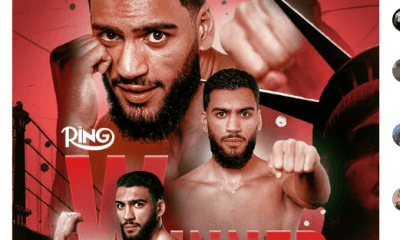
 Featured Articles3 weeks ago
Featured Articles3 weeks agoResults and Recaps from NYC where Hamzah Sheeraz was Spectacular
-

 Featured Articles4 weeks ago
Featured Articles4 weeks agoFrom a Sympathetic Figure to a Pariah: The Travails of Julio Cesar Chavez Jr
-
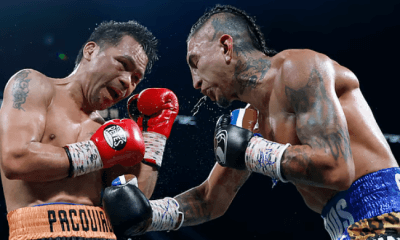
 Featured Articles2 weeks ago
Featured Articles2 weeks agoManny Pacquiao and Mario Barrios Fight to a Draw; Fundora stops Tim Tszyu
-
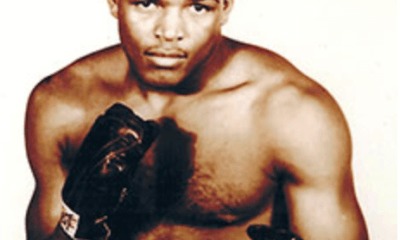
 Featured Articles3 weeks ago
Featured Articles3 weeks agoPhiladelphia Welterweight Gil Turner, a Phenom, Now Rests in an Unmarked Grave
-
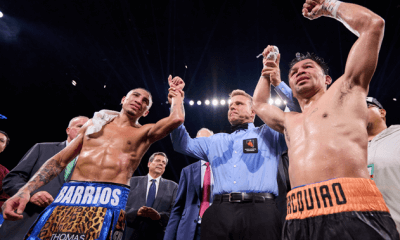
 Featured Articles2 weeks ago
Featured Articles2 weeks agoArne’s Almanac: Pacquiao-Barrios Redux
-
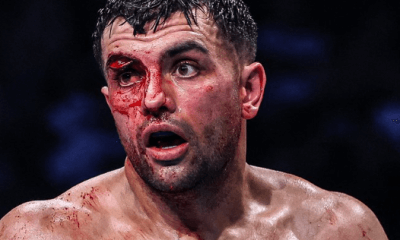
 Featured Articles4 weeks ago
Featured Articles4 weeks agoCatterall vs Eubank Ends Prematurely; Catterall Wins a Technical Decision

















